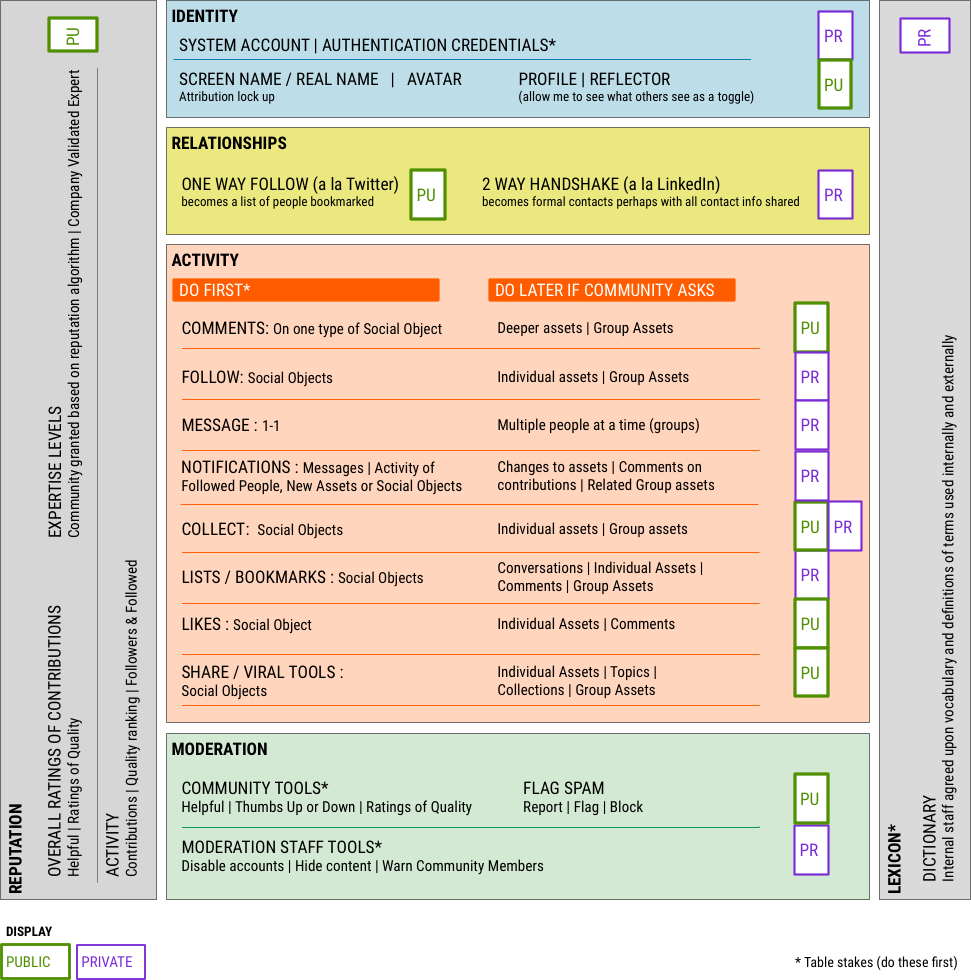
The Social Strategy Canvas
| Type of Work | FrameworkStrategy |
|---|
Over the years since the publication of my book, Designing Social Interfaces, I have worked with a number of clients on their Social Strategy. During this time I have revised, iterated, and refined a Social Strategy Canvas that helps guide a business when planning what social elements and features they should be considering to improve the social interactions of their customers.
This tool can help guide the discussion of what to account for when planning social features. Social features and actions are intertwined and having an overview of the landscape can help define a longer term roadmap for what features need to be considered.

The key building blocks for planning are:
Identity — some way for customers to be identified to the system and to each other.
Relationships — a way for customers to interact with each other and know who they are interacting with.
Activities — the activities relevant to your business that encourage return visits, social interactions and contributions.
Moderation — the other side of Activities that keep things civil and appropriate to your business goals and audience.
Reputation — the system that uses all the other building blocks to create and either display or not, the reputation levels of your customers as determined by other customers, their engagement and contributions, and your weighting and ranking algorithm.
Lexicon — a lexicon to clarify and rationalize vocabulary across the organization when discussing and labeling social offerings.
In addition to deciding what to consider, we analyze each feature and decide whether or not it is a public facing — meaning other people can see it regardless of the relationship model — or private facing — meaning only the business and the engaged customer can see it.
Determine what to do first, keeping in mind that several elements in the framework are intertwined — for example, you shouldn’t allow posting comments without some sort of attribution and you can’t have attribution without some sort of identity. Another example is having a way to save to a customer’s bookmarks, lists and other collections, which means the user needs some sort of identity, even if it is just authentication credentials so their lists can be associated with their account. If those elements are public, then they also need an outward facing identity (attribution).

Plan out the features you are considering with the canvas and consider how each may support your business goal while infusing a social mindset into your products.